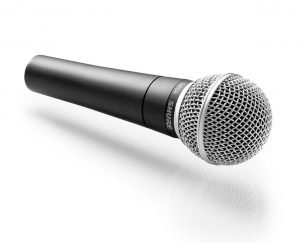So, you’re eager to dive into the world of home recording? It’s understandable if you feel a bit overwhelmed by the sheer volume of information. The good news is that entering the realm of music production has never been more accessible. Music recording equipment and software are more affordable and user-friendly than ever before.
This beginner’s guide aims to simplify the home recording process, providing you with the knowledge to transform your musical ideas into polished recordings you’ll be excited to share.
Essential Questions to Answer First
Before you begin, consider the following questions:
What’s the Budget?
The cost depends on your aspirations. If you already have a decent computer, a basic setup with a quality microphone and necessary accessories will cost around $300.
Think about how many tracks you need to record simultaneously. Recording a full drum kit, for instance, often requires 6-8 microphones. This means you’ll also need stands, cables, and an audio interface with enough inputs.
Remember, you don’t need to buy everything at once. Starting with one or two microphones and expanding your collection gradually is a perfectly valid approach. You can even achieve excellent drum recordings with just 2-4 microphones.
How Much Time Will It Take to Learn?
The learning curve can be steep, but consistent effort will break down the process into manageable steps. While mastering the entire process takes time, grasping the basics is relatively quick. The beauty of home recording is that there’s always something new to discover.
What is a DAW (Digital Audio Workstation)?
A DAW is software that enables you to record, edit, and mix audio. While some DAWs are hardware-based, we’ll focus on software DAWs – computer programs designed for music production.
Understanding Multi-tracking
Multi-tracking involves recording each microphone or sound source onto separate tracks. This allows for individual editing and tweaking of each element in your song. Mixing is the process of blending these individual tracks to create a cohesive stereo mix.
Multi-tracking empowers you to capture each element independently, granting complete control over your mix.
While recording tracks might seem straightforward, mastering the art of mixing is where the real challenge lies. This skill takes time and dedication to develop.
Essential Recording Equipment
Computer / DAW
A powerful computer isn’t essential for starting, but a good processor and ample RAM are beneficial. As you work on more complex projects with numerous layered tracks, processing power and RAM become increasingly important. For PC users, 8 GB of RAM or more is recommended, though 4GB is sufficient to start. Plugins consume RAM quickly, so upgrading might be necessary as you progress.
Mac vs PC
The choice between Mac and PC boils down to personal preference. Professional studios often use Macs, but most popular DAWs are compatible with both operating systems. Windows PCs can offer comparable power at a lower cost. Consider compatibility with your other equipment, as some high-end interfaces are Mac-exclusive.
Recording Interface
A recording interface is a crucial piece of equipment. It allows you to connect microphones and other audio sources to your computer for recording.
Interfaces typically connect via USB or Firewire, with prices starting around $100 for models like the Focusrite Scarlett Solo (Amazon). Higher-end units, costing over $1,000, offer more channels, inputs/outputs, and superior preamps and converters.
alt: Focusrite Scarlett Solo USB audio interface, a popular choice for beginner home recording studios.
Microphones
Start with one or two microphones and expand your collection as needed. Understanding the different types of mics and how they work is important. The two most common types are dynamic and condenser microphones.
alt: Shure SM58 dynamic microphone, a widely used vocal microphone for both stage and studio.
- Dynamic Microphones: Versatile and robust, dynamic mics handle a wide range of volumes and are suitable for vocals, drums, and various instruments.
alt: Rode NT-2 condenser microphone, known for its versatility and use in recording vocals and instruments.
Shure offers an excellent free resource on microphone techniques and placement. Access the PDF version here.
Mic Stands
Mic stands are essential. Sturdy stands are preferable, as flimsy ones can transmit vibrations and affect sound quality.
Pop Filter
alt: Pop filter in use with a condenser microphone, minimizing plosive sounds during vocal recording.
Pop filters are highly recommended for vocal recording to reduce “plosive” sounds (hard “b’s” and “p’s”). Metal grille pop filters are more effective than nylon ones.
Cables
The primary cables you’ll need are microphone cables and instrument cables.
Microphone cables use three-pronged XLR connectors. The terms “microphone cable” and “XLR cable” are interchangeable. Quality varies, and investing in higher-quality cables is recommended to avoid shorts and wiring issues.
alt: Close-up of XLR connectors on a microphone cable, commonly used in professional audio setups.
Instrument cables use 1/4 inch TRS (Tip/Ring/Sleeve) jacks. These come in balanced and unbalanced varieties. Balanced cables reduce noise, especially with longer cable runs.
Studio Monitors / Reference Monitors
alt: Pair of studio reference monitors, essential for accurate audio mixing and critical listening.
Reference monitors are crucial for serious recording. Unlike regular speakers, they have a flat frequency response, providing an accurate representation of your audio. The goal isn’t to make things sound good initially, but to accurately reflect the sound, ensuring your mixes translate well across different playback systems. Some monitors, like Yamaha NS-10’s, are known for their unforgiving sound, forcing you to create a well-balanced mix.
Studio Monitor Headphones
Like monitor speakers, monitor headphones offer a flat frequency response for accurate mixing without artificial enhancements. While some prefer mixing entirely on headphones, ideally, you’d use a properly treated room with good monitor speakers. However, headphones are a valuable alternative when working in less-than-ideal acoustic environments.
Ready to Record: Setup Steps
If you have the essentials – interface, microphone, and cables – you’re ready to record. Here’s how to get everything connected:
Installing Drivers
Install the software drivers that come with your recording interface. On Macs, drivers might not be necessary depending on the interface. Windows users should install drivers from the CD-ROM or the manufacturer’s website.
Setting up Your DAW / Recording Software
Many DAW options are available. For Mac users, Reaper or GarageBand are good choices. Windows users can try Audacity, a free option, but Reaper is highly recommended.
Reaper is user-friendly, feature-rich, and offers a free 30-day trial. After the trial, a license is affordable (around $65). Reaper is lightweight, constantly updated, and has gained a loyal user base. This guide will use Reaper for demonstrating the recording process.
Configuring Your Interface
Configure your recording interface within your chosen DAW. In Reaper, go to PREFERENCES > AUDIO > DEVICE and select your interface from the “Input Device” dropdown. If your interface isn’t listed, double-check that the drivers are installed correctly.
Recording Your First Track in Reaper
Now, let’s dive into creating a new session, laying down tracks, and creating your first mixdown.
Creating a New Track
Create a new track by pressing Control+T (Command+T on Mac) or going to “Track” > “Create New Track.” This track will display the waveform of your recorded audio.
Name the track before recording. This automatically names your recorded audio files, keeping you organized. Double-click the new track and enter a name.
Now you’re almost all set to record. We need to do a couple quick things:
Set the Input on your Track
Select the input on your audio interface that you want to record from. This depends on the number of inputs your interface has.
Set the Recording Levels
Check your levels to avoid clipping. Keep the loudest parts around -10 dBFS on your volume meter. Adjust the gain on your interface to ensure sufficient headroom.
Record-Enable your Track
Every track has a red circular “record-enable” button. This selects the track you’ll record to when you press the record button.
Setting Tempo and Time Signature
The default tempo is 120 BPM and the time signature is 4/4. Adjust these settings on your timeline as needed.
Hitting Record
Press the record button, then the play button. The project will start, and you can begin recording.
Saving your Song
Add as many tracks as you like to layer your song. Mixing is a separate skill to learn, but you can adjust basic volume and panning in the mixer window. To save, highlight the area you want to export by clicking and dragging on the timeline.
Go to File > Render to open the render options. Choose a folder, file name, and click “Render” to save. By default, you can only save to .wav format. To enable MP3 saving, download an encoder like LAME.
What’s Next?
Understanding the fundamentals of recording is crucial for creating music you’re proud of. Building your first home studio is just the beginning. Consider these next steps:
- Master your DAW: Learn the intricacies of your chosen DAW, including hotkeys and shortcuts.
- Learn Mixing: Develop your mixing skills to create polished final projects. Watch tutorials and focus on one aspect at a time.


